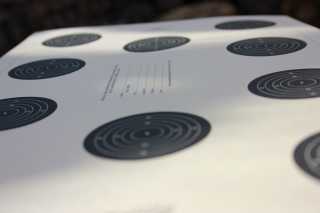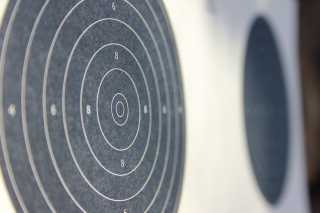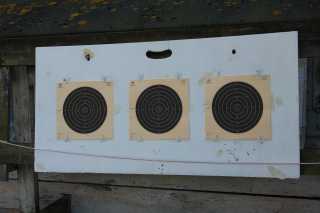What is Competition Prone Small Bore Target Shooting
Smallbore rifle shooting at WPRC involves the use of .22 calibre target rifles firing .22 LR rimfire ammunition at paper targets at 25, 50 and 100 yards.
There are over 600 clubs with over 10,000 people shooting smallbore rifle on a regular basis in the United Kingdom alone. For some people shooting is a recreational sport to be enjoyed with friends and provides an environment to meet like minded people. For others it is an intense challenge requiring discipline and effort with the goal of competing and ultimately winning at club, county or international level.
The shooter lays prone, that is lies down on a padded mat and supports the rifle with the aid of a sling. The targets are of traditional format with a bulls eye in the centre that scores 10 points. The shooter then fires a sequence of shots and the person with the highest score wins.
Young shooters must be over the age of 14 to shoot smallbore rifles with us and are supervised by an adult. We may take younger shooters in exceptional circumstances but always require a parent to be in attendance.
What is the difference between 25, 50 and 100 yard shooting?
Shooting at the three distances is very different to each other but on each series of 10 shots the highest possible score (hps) is 100.
At 25 yards shooting the 10 ring is only 12.92 mm across but the shot must not touch the inside of the printed ring. Each of 10 shots is at one of 10 different diagrams printed on the same card. If the shot cuts the 10 ring it is scored as a 9. We call this ‘outward gauging’. So 25 yard shooting requires immense concentration to repeatedly achieve a 10 on each target, something very few shooters can achieve. Remember the .22 round is only 5.7 mm in diameter, so this requires great precision. At WPRC we shoot outdoors, so even at 25 yards the wind can have an effect because the tolerances are so fine.

Competition 50 yard shooting usually consists of shooting 20 rounds, 5 each at 4 diagrams, the 10 ring on this target is 9.03mm but a shot touching this ring is scored as 10, so this is ‘inward gauging’. The wind and weather really start to make a difference at this range. Although the printed targets at each distance are proportionate so that the ‘aiming mark’ looks the same through the sights, the shot is often deflected in the air between leaving the rifle and hitting the target.
Learning to read how much deflection is caused by different conditions is called ‘wind doping’ and this is the real art of the target shooter.

At 100 yard’s wind can have a significant effect on the trajectory of a bullet. Depending on the direction and speed that the wind is blowing the bullet can be pushed all over the target by several centimetres. This is further complicated by the fact that the wind is constantly changing, and may be blowing in different directions down the length of the range. On sunny days the warm ground heating the moving air causes a mirage which moves the apparent position of the target, causing inaccurate aiming with resultant poor scores if not adequately read and compensated for.
We have the skill and experience to coach a shooter for all of these situations but it is the gained knowledge from taking part that is exceptionally rewarding.
